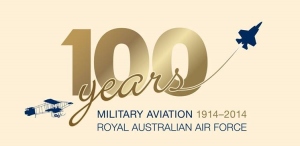 To commemorate the centenary of military aviation in Australia (1914 to 2014) I am writing a six-part series on the key stages of the RAAF: The Early Years – 1914 to 1939 (World War One and the interwar years), World War Two – 1939 to 1945, the Cold War Begins and the Korean War – 1945 to 1953, South East Asian Conflicts – 1950 to 1972, Peacekeeping and Modern Conflicts – 1973 to 2014 and finally The Future (the re-equipping of the RAAF). So for now lets take a look at those early years of military aviation.
To commemorate the centenary of military aviation in Australia (1914 to 2014) I am writing a six-part series on the key stages of the RAAF: The Early Years – 1914 to 1939 (World War One and the interwar years), World War Two – 1939 to 1945, the Cold War Begins and the Korean War – 1945 to 1953, South East Asian Conflicts – 1950 to 1972, Peacekeeping and Modern Conflicts – 1973 to 2014 and finally The Future (the re-equipping of the RAAF). So for now lets take a look at those early years of military aviation.
The Royal Australian Air Force (RAAF) has operated some of the best aircraft available in its long, illustrious history and is the second oldest independent air force of any nation. The United Kingdom was the first to establish an air force separated from the Army when the Royal Air Force was officially formed on April 1st, 1918, then in January 1920 the interim and independent Australian Air Corps (AAC) was formed (see The Inter-War Years below for more information).
The title of the Australian Air Force was established on March 31st, 1921 and then following the official consent from King George V became the Royal Australian Air Force on August 13th, 1921. The true birth of Australian military aviation though, started in 1914 as a branch of the Australian Army with the Central Flying School (CFS) and then the Australian Flying Corps (AFC) during World War One.
THE EARLY YEARS
The first Australian military Central Flying School (CFS) was approved by the Australian Government in 1912 and established in 1914 at Point Cook in Victoria (home of the RAAF Air Museum today – initiated 1952). Initially the Australian government Military Board planned to establish the school in Canberra near the new Duntroon military college but the area was deemed too hilly and to distant from the coast to be suitable for flight training
The CFS initially started with just two officer instructors, who also established the school, Englishman Henry Petre and Australian Eric Harrison (both learned to fly in England and qualified for the Royal Aero Club Certificate – an internationally recognized pilots licence), plus a small number of mechanics but soon grew in numbers when in July 1914 they advertised for 4 military men to train as pilots.
The Point Cook airbase (a very rudimentary affair at that time) became the site of the first Australian military flight, when flight instructor Lieutenant Eric Harrison first took off in a Bristol Boxkite into the sky over Point Cook on March 1st, 1914. The first flight training course began on August 17th, 1914 with four student pilots. Richard Williams became the first pilot to graduate that year (just 8 years later he would command the Royal Australian Air Force).
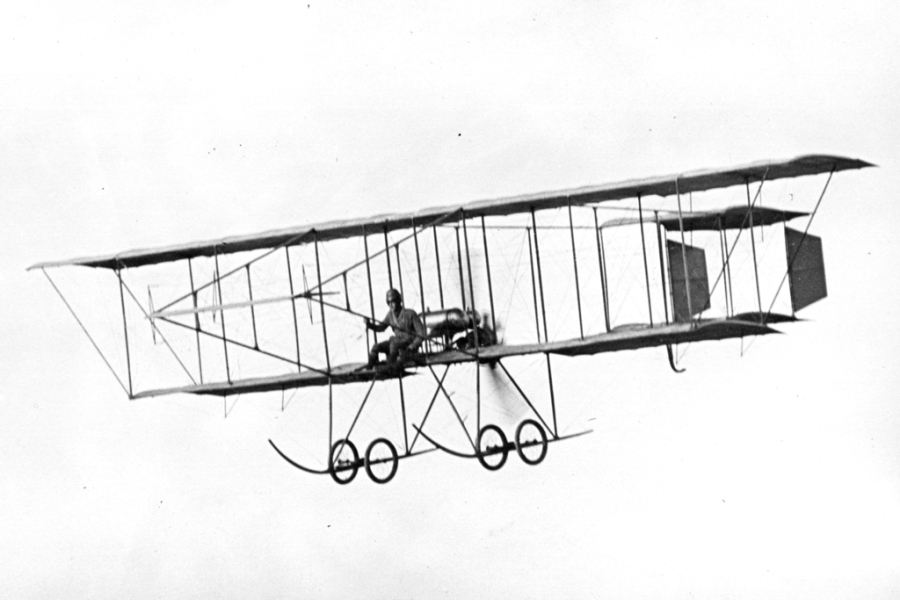
The CFS squadron started with very humble beginnings equipped with just 5 aircraft – 2 Royal Aircraft Factory B.E.2’s, 2 Deperdussin monoplanes and a Bristol Boxkite along with 4 officers, 7 NCO’s and 32 mechanics (in August 1915 a second Boxkite was added to the squadron). The aircraft of the day look so fragile. Brave men indeed!
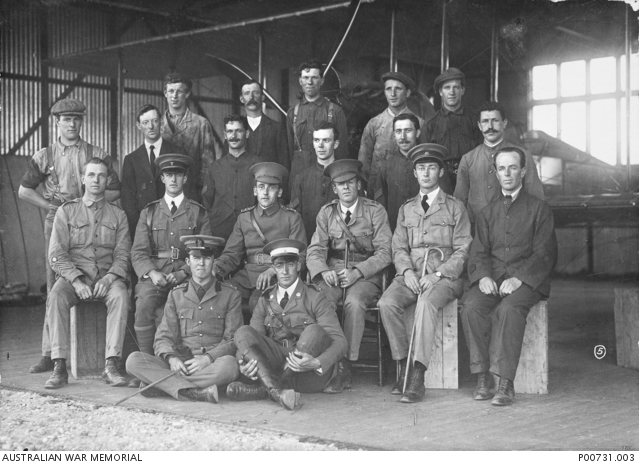
Left to right: back row: A. W. Murphy (mechanic), W. Lord (caretaker), L. G. Carter (mechanic), N. Dyer (mechanic), R. Mason (mechanic);
Middle row: Sgt G. J. W. Mackinolty, V. Ronald (clerk), Sgt G. Fonteneau (French mechanic for gnome engines), Sgt E. Shorland, Sgt S. Heath, A. M. pivot (French mechanic for gnome engines);
Sitting: Warrant Officer S. J. Hendy (storekeeper), Lieutenant G. P. Merz, Captain H. A. Petre, Lieutenant E. Harrison, Captain T. W. White, Warrant Officer Richard Henry Chester;
Front row: Lieutenants Richard Williams, D. T. W. Manwell.
Captain White, Lieutenant Merz, Lieutenant Williams and Lieutenant Manwell were the four officers who qualified as pilots on this course. Major Petre and Group Captain Harrison, selected in England, had been given honorary commissions as flying instructors. (Photo Source: AWM)
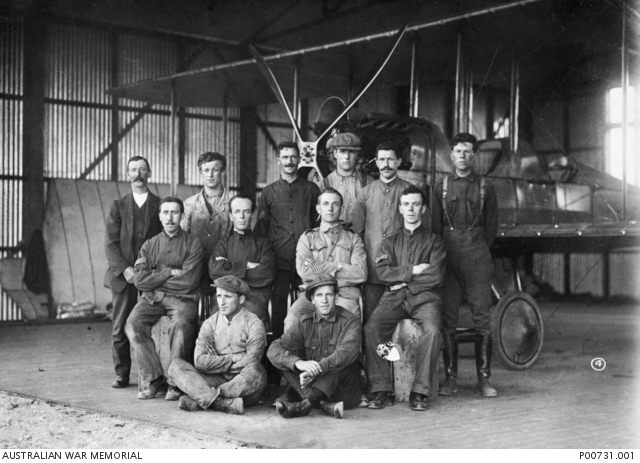


Centenary of Military Aviation celebrations were held with a big air show at Point Cook on March 1st – 2nd, 2014. The event was a well attended and well received (I wish I was there!).
WORLD WAR ONE
In the early days of military flying the Australian Flying Corps (AFC) operated during World War One (1914-1918) as part of the Australian Imperial Force (AIF) under the overall structure of the British Royal Flying Corps (RFC). Australia was the only British dominion to establish a flying corps during the war.
While the Central Flying School (CFS) prepared pilots for war back at home, the first major AFC deployment was the Mesopotamian Half Flight that departed for the Middle East in 1915. By 1917 the Australian role in the air war had expanded greatly!
Four complete combat AFC squadrons took part in the war, flying observation, reconnaissance, photo reconnaissance, bombing, ground attack and scouting patrols to engage enemy aircraft over the battlefields of Europe and the Middle East – No. 1 Squadron departed Australia for the Middle East in March 1916. By late 1917 No. 2, 3, and 4 Squadrons were formed to fight in France. The AFC also operated an Australian Training Wing in England consisting of four training squadrons to train pilots to fly on the Western Front (No. 5, 6, 7 and 8 Squadrons).

The AFC squadrons were not the extent of Australian aviators in World War One though. Many recruits wanted to sign up and fly for the AFC but the reality was there were only a limited number of training facilities and aircraft available in Australia, so many of them ended up sailing for England and learning to fly there. Several hundred men then served in the RFC and Royal Naval Air Service (RNAS) during World War One. Some of the top Australian aces of the war flew with the RNAS (more on that later).
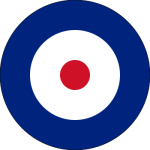
AUSTRALIAN FLYING CORPS ROUNDEL
AFC aircraft flew with the same red, white and blue roundel as found on Royal Flying Corps aircraft. This continued to be the roundel of what became the RAAF until around 1942. During World War Two the red dot was removed to avoid being confused with Japanese aircraft! After the war it was reintroduced and remained on RAAF aircraft until 1956, when the famous kangaroo roundel was implemented (there was even some experimentation with a standing kangaroo!).
GERMAN NEW GUINEA
The first military action undertaken by Australia was in 1914 during the September 11th Australian Naval and Military Expeditionary Force invasion of German New Guinea. To support the attack, 2 aircraft were crated up and shipped with the naval fleet. In the only major conflict at Bita Paka (near Rabaul), German resistance from reservists and police was quelled within a day (this battle resulted in the first loss of Australian life in World War One when 6 soldiers were killed) and by September 21st, 1914 all German colonial forces in New Guinea had surrendered.
In the end the aircraft took no part in the fighting and given it was all over relatively quickly they were not even unpacked from the crates! Australian pilots was soon in action though, this time on the other side of the world.

THE MIDDLE EAST
Mesopotamian Half Flight
In April 1915 at the request of the British (via a letter from the Viceroy of India), the Australian Government despatched the Mesopotamian Half Flight to operate in Mesopotamia (Iraq) supporting the Indian Army fighting against the Ottoman Empire (Turkey) who were aided by their Imperial German allies (including air support). The Mesopotamian Half Flight consisting of 4 officer pilots and 41 servicemen, arrived in May 1915. Their aircraft were provided upon arrival by the Indian government.
At the time Australia only had a pool of 2 flight instructors, 4 pilot graduates and one other pilot, William Treloar, who was working as a mechanic but had learned to fly in England before the war! CFS Squadron Flight instructor Henry Petre was selected to command the half flight, 2 pilot graduates – George Merz (dux of the first pilots course at Point Cook) and Tom White plus Treloar were selected as the other pilots to go to Mesopotamia.
Initially the aircraft on hand for the Mesopotamian Half Flight were obsolete French designed pusher types consisting of 2 Maurice Farman Shorthorn and one second-hand Maurice Farman Longhorn reconnaissance aircraft. These aircraft were not well suited for desert type operations as they had a low top speed of around 100 kph which was an issue in strong desert winds and in the desert heat poor lift capability meant they sometimes couldn’t take off (the Longhorn reportedly had many mechanical issues too)! Despite these issues the half flight were quickly put on valuable reconnaissance missions in support of the failed British and Indian advance on Baghdad.
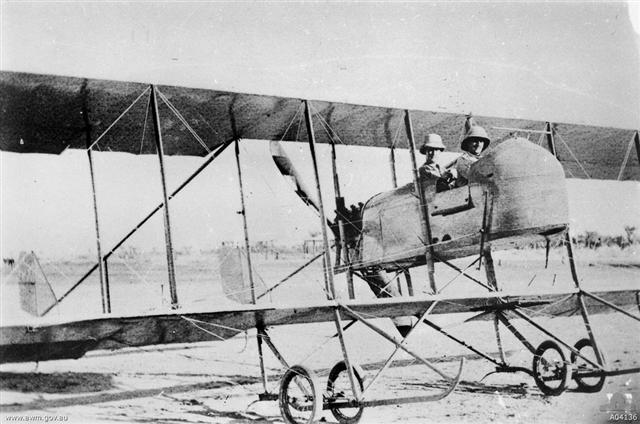
In July 1915 the half flight was issued 2 French built Caudron G.3 reconnaissance aircraft that unfortunately were almost obsolete too, but were considered better than the Shorthorns. One of these Caudron aircraft was unfortunately involved in the first loss of Australian airmen in World War One but strangely not at the hands of the enemy. On July 30th, 1915 the 2 man crew was forced to land behind enemy lines due to mechanical problems and some how got involved in a running gun battle with armed Arabs that resulted in both of the crew being killed (pilot George Merz and observer William Burn).
The half flight was attached to the RFC No. 30 Squadron on August 24th, 1915. Additional aircraft including 3 Maurice Farman Shorthorns and 4 Royal Aircraft Factory B.E.2 were allocated to this combined squadron.

Things started to go badly for the half flight though and at least 2 crews were taken prisoner and with the failure to capture Baghdad from the Turks, by December 1915 the retreating British/Indian forces were surrounded and besieged in Kut. The Commander, Petre, the last original member of the Mesopotamia Half Flight, flew the last Shorthorn to safety and a few mechanics also got away.
Kut surrendered in April 1916. 9 mechanics from the half flight were taken prisoner (only 4 survived this ordeal). Petre came down with typhoid fever in May 1916 and was sent to India. Following his recovery, he returned to England and flew with the RFC.
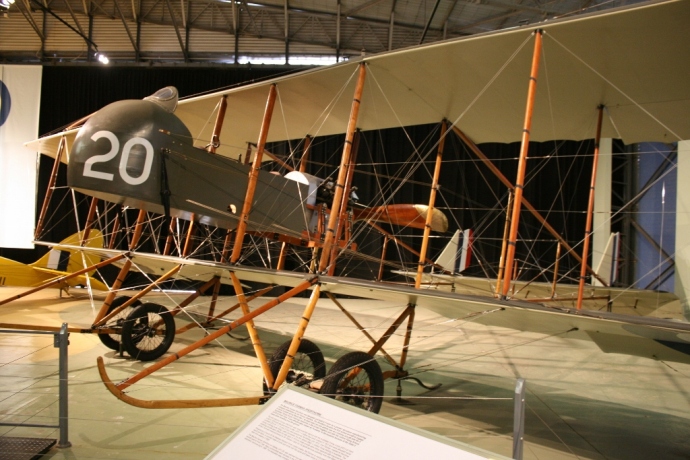
Whilst the half flight was in operation in the Middle East, the CFS Squadron conducted three flight courses and by the end of 1915 had trained 24 more pilots. They would form the nucleus of the first full Australian Squadron to operate within the structure of the Royal Flying Corps. The British would provide the higher command and aircraft, Australia just needed to provide the pilots and ground crew.
Flight Instructor Eric Harrison was given the job to form No. 1 Squadron Australian Flying Corps in January 1916. CFS Squadron’s first graduate from 1914, Richard Williams was put in command, his pilots lacked experience and his ground crew including mechanics even more so (the latter were selected from applicants at recruitment centres and depots)! Training would continue in Egypt, where they set sail for in March 1916.
No. 1 Squadron
No. 1 Squadron served in the Middle East (Egypt, the Sinai, Palestine and Syria) against the Turks and the Germans from 1916-1918. Initially it was officially known as No. 67 (Australian) Squadron within the RFC but the Australians referred to it as No. 1 Squadron AFC and this became the official title in 1918.
The squadron initially flew outdated aircraft like the Royal Aircraft Factory B.E.2. conducting reconnaissance and bombing missions. Their initial aircraft were outclassed by the better armed enemy flying Fokker and Aviatik aircraft, but by the second half of 1917 the squadron reequipped with the two seat Bristol F2B Fighter (one of the most advanced aircraft in its day) and soon gained air superiority, allowing the British and allied forces to operate freely from air attack.
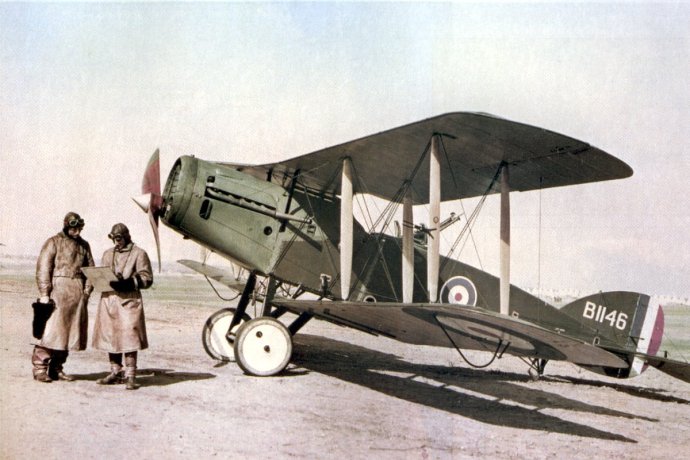
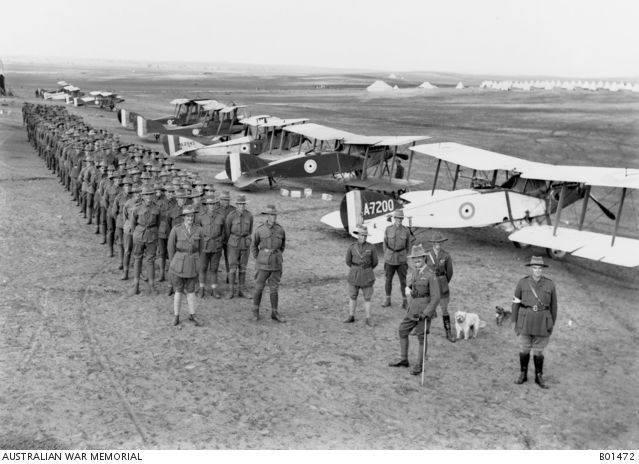
No. 1 Squadron was involved in missions throughout the Middle East campaigns of 1917 and 1918 including the last great offensive launched on September 19th, 1918 with the Battle of Megiddo. No. 1 Squadron and RFC squadrons bombed the 7,000 man Turkish Seventh Army virtually destroying it.
Turkish forces finally surrendered on October 31st, 1918 ending the Middle East campaign. The AFC squadron contributed greatly to this victory and achieved over 100 aerial victories during their time in the Middle East. They also supported operations by T. E. Lawrence (Lawrence of Arabia) and his Arab army. The AFC also helped pioneer aerial reconnaissance in the theatre of war.
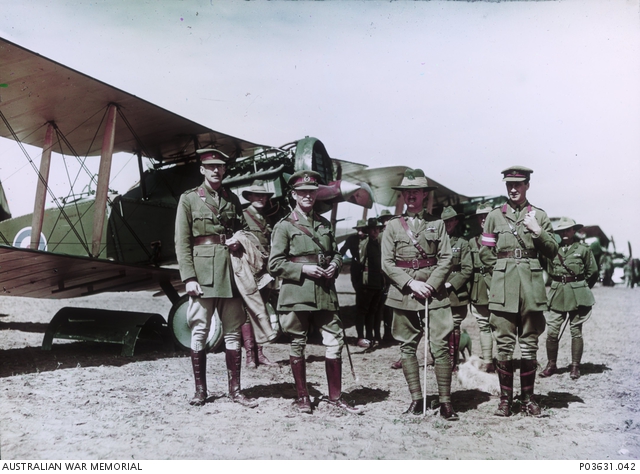
No. 1 Squadron returned to Egypt in February 1919 and its servicemen then left for Australia the following month. Upon their arrival home the squadron was disbanded, but was reformed again in 1922 and today remains a major combat squadron of the RAAF.
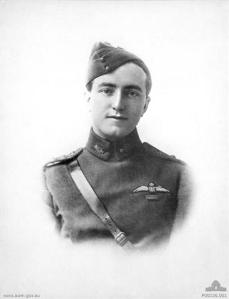
The first Victoria Cross awarded to an Australian flyer for valour in the presence of the enemy was won by Lieutenant Frank McNamara of No. 1 squadron on March 20th, 1917. Following a raid on a train line, despite being wounded himself, McNamara landed and rescued a downed pilot from the raid whilst under enemy fire behind Turkish lines. Interestingly despite heavy involvement in combat over enemy lines, he was the only AFC pilot to be awarded a VC in World War One.
THE WESTERN FRONT
AFC No. 2, 3 and 4 Squadrons served on the Western Front in Europe flying against Imperial Germany from 1917-1918. The three AFC squadrons accounted for 768 German aircraft destroyed on the Western Front. Initially the squadrons were deployed to England in 1916/1917, then served in Belgium and France.
No. 2 Squadron
No. 2 Squadron, originally No. 68 (Australian) Squadron RFC but renamed in 1918, was formed in Egypt on September 16th, 1916. A few experienced flying officers from No. 1 Squadron were to lead a rag tag band of men who were tradesmen or had volunteered from the Australian Light Horse and get them trained up in the art of flying and maintaining combat aircraft.
In January 1917 the squadron relocated to England for training and then deployed to France in September 1917 to begin operations on the Western Front. Initially the squadron was equipped with Airco DH.5 scout aircraft and saw action during October and November 1917 in the third Battle of Ypres (Passchendaele), then the Battle of Cambrai during November and December 1917.
Lieutenant F.G. Huxley scored the squadrons first aerial victory on November 22nd, 1917 when he downed a German Albatros scout. According to the RAAF Museum this was also the first aerial victory of the AFC, other reports indicate Stan Muir flying with No. 1 Squadron on the Middle East may have achieved this in December 1916 but the RFC couldn’t confirm the victory and German records didn’t record a loss in that incident.
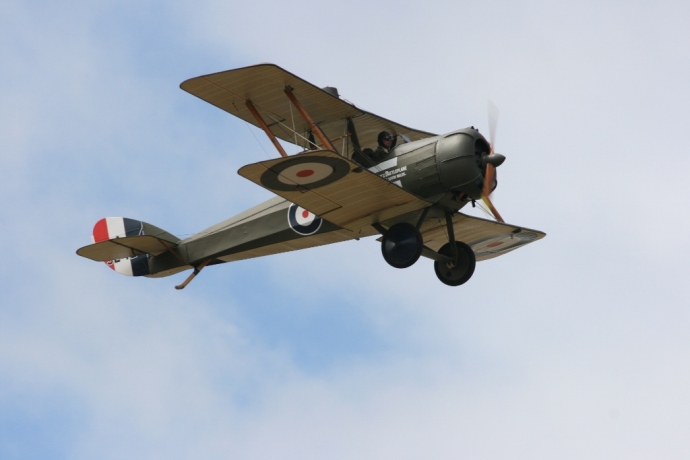
The horrors of the muddy, bloody trench warfare battlefields of World War One are well-known and often the “flyboys” were seen as being lucky to be up in the sky, but aerial warfare had its own horrors. On the first day of the Battle of Cambrai, the then No. 68 (Australian) Squadron lost 7 of its 18 aircraft (on each day during that battle ground attack squadrons experienced 30% losses)! Despite these losses the squadron was the scourge of the Germans on the ground. 6 Military Crosses were awarded to No. 68 Squadron personnel following the Battle of Cambrai in recognition of “an act or acts of exemplary gallantry during active operations against the enemy” (including Lieutenant F.G. Huxley).
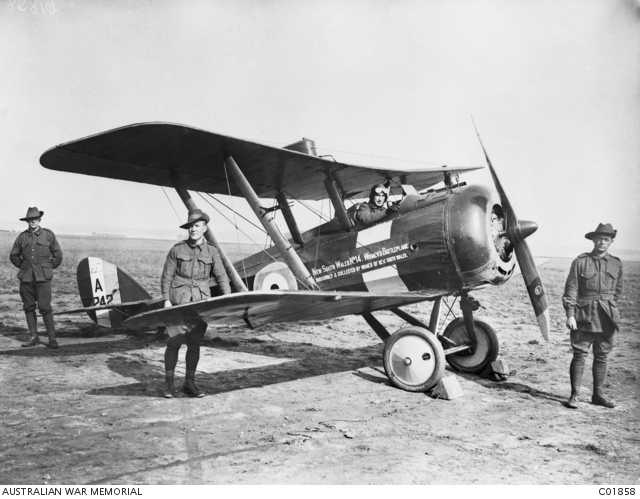
In December 1917 No. 68 Squadron re-equipped with the superior Royal Aircraft Factory S.E.5a scout. The winter of 1917 to 1918 was a bad one weather wise and the squadron did not see too much action during that period. On January 4th, 1918 the squadron was renamed No. 2 Squadron.
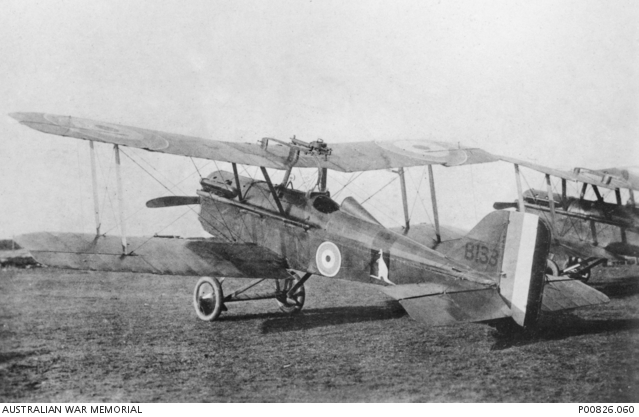
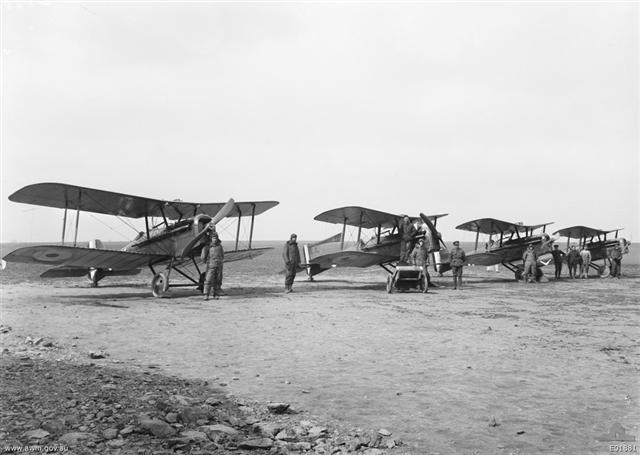
No. 2 squadron was heavily involved in combat during the German 1918 spring offensive, then in support of the French during the German summer offensive in Marne. They also participated in the allied counter offensive of August 1918.
The last major combat operation for the squadron was on November 9th, 1918. Following the end of the war, members of the squadron were involved in testing captured German aircraft. The squadron returned its aircraft in February 1919 and all members were sent back to Australia with the squadron officially disbanding upon their arrival home on June 18th, 1919 (the squadron was briefly reformed in 1922, then again in 1937 and has remained active ever since).
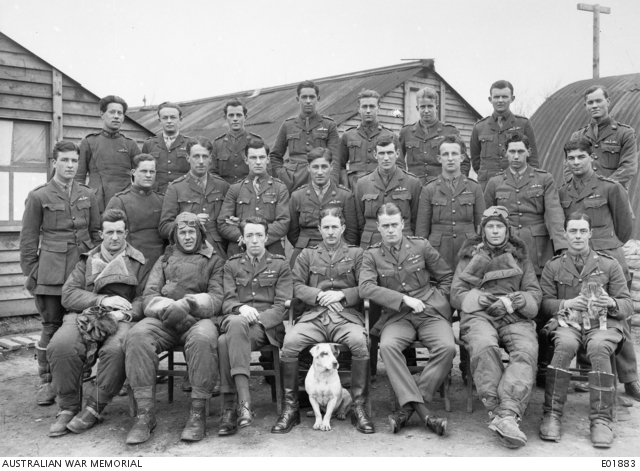
No. 3 Squadron
No. 3 Squadron was formed at Point Cook, Victoria on September 19th, 1916 (confusingly it was originally knows as No. 2 Squadron, then in England as No. 69 Squadron and finally No. 3 Squadron in 1918!). Unlike No. 2 Squadron which was formed mainly with army volunteers and tradesmen in Egypt, this new squadron consisted of trained pilot and groundcrew graduates from Point Cook and army tradesmen volunteers.
The squadron arrived in England for training on December 28th, 1916 and on September 10th, 1917 equipped with Royal Aircraft Factory R.E.8 two-seat reconnaissance/bomber biplanes became the first AFC squadron to arrive on the Western Front. They then began operating over Canadian troops in the Arras area of France.

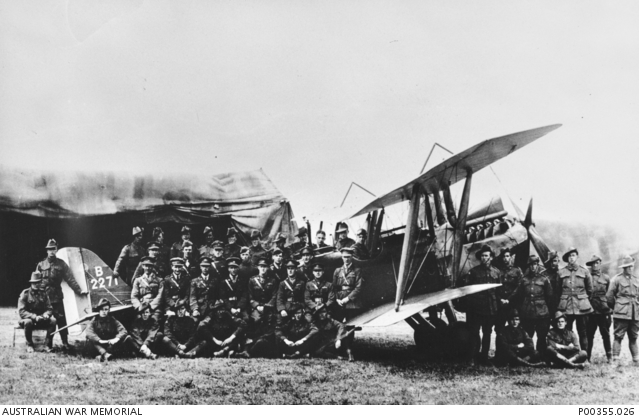
In November 1917 No. 3 Squadron relocated to the Flanders region in support of Australian troops and were tasked with locating enemy artillery and conducted bombing missions. By early 1918 the squadron was dropping propaganda leaflets over the German front and conducting photo reconnaissance missions.
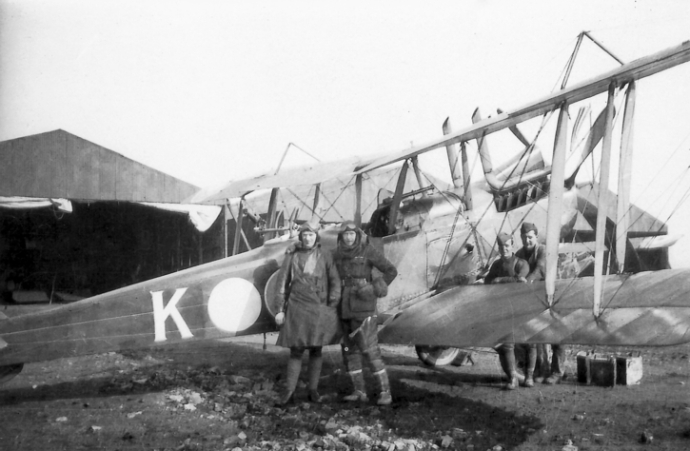
Around this time a very famous Australian pilot was flying in the squadron. His name was John Robertson Duigan (May 31st, 1882 – June 11th, 1951), an aviation pioneer who on July 16th, 1910 made the first Australian designed, built and piloted powered flight.
The flight took place on his father’s property “Spring Plains” near Mia Mia in Victoria (a monument to the flight was erected nearby in 1960). He flew a pusher biplane aircraft he designed and built with his brother Reginald who also later flew the aircraft too (a replica of the aircraft can be seen at the Melbourne Museum). This first flight only went about 7 metres (twenty-three feet) but by October 1910 he was flying nearly 183 metres (600 feet) and later anywhere up to 2 kilometres (1.24 miles). He apparently considered the later flights more controlled and in his opinion his first truly successful flight was on October 7th, 1910 (178 metres / 584 feet).
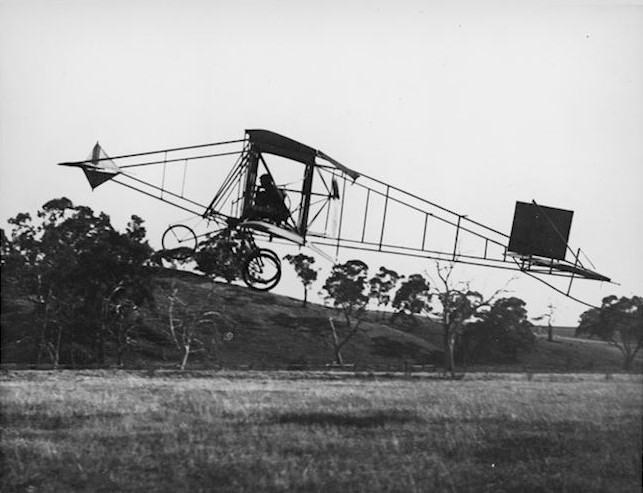

On March 14th, 1916 John Robertson Duigan was commissioned as a Lieutenant in the AFC and embarked for training in Britain in October 1916. He was promoted to Captain and became a Flight Commander in August 1917. Then it was onto France with No. 3 Squadron where he proved himself a very capable pilot in combat flying Royal Aircraft Factory R.E.8 two-seat biplane reconnaissance and bomber aircraft. So much so that he was awarded the Military Cross for gallantry on May 8th, 1918 when he was attacked by 4 German aircraft over Villers-Bretonneux.
Despite being severely wounded and his aircraft being on fire, with his observer unconscious, Duigan managed to evade the enemy aircraft and force land near the frontline. Once on the ground he insisted the photographic plates from his reconnaissance mission be sent to headquarters and his observer rescued first before he himself was taken to hospital!
Duigan made 99 flights mostly behind enemy lines during his 5 months at the front but that last engagement and the wounds he suffered ended his combat career. He finished the war as the acting Commanding Officer of AFC Number 7 Training Squadron in Great Britain before returning to Australia in 1919. When he got back to Melbourne he became an Electrical Engineer. From 1941 to 1945 he worked again for the Australian military in the RAAF quality control branch. His contribution to Australian aviation was significant.
In 1918 No. 3 Squadron was relocated to the Somme region and was involved in battles during the 1918 German spring offensive including important artillery spotting missions. On April 21st, 1918 squadron aircraft were involved in the action that ultimately resulted in the death of leading German air ace Manfred von Richthofen (the “Red Baron” with 80 air to air victories).
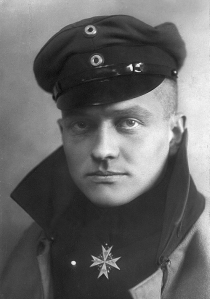
Two of the squadrons aircraft were under attack by 4 German aircraft led by Richthofen, but the AFC airmen were able to keep them at bay. Looking for easier targets the German pilots headed lower to the ground which was a major mistake that lead to him being shot down.
Officially Richthofen was shot down by Canadian RFC pilot Arthur “Roy” Brown while he was chasing another RFC aircraft, but controversy about this has always reigned and it is highly likely that ground troops from a battery of Australian Field Artillery firing machine guns and rifles at him were actually responsible for his death (only one bullet was found in his body. It had penetrated his right armpit and then through his heart, indicating the shot came from below, not behind or above). Richthofen was only 25 years old. Given he came down near Australian lines, No. 3 Squadron being the closest assumed responsibility for his remains.
Richthofen’s Fokker Dr.I Driedecker triplane apparently landed mostly intact, but before it could be secured souvenir hunters had pretty much pulled it apart! Some parts of the aircraft and some of his personal effects are today held by the RAAF Museum and the Australian War Memorial (the AWM collection includes his fur lined flying boots).

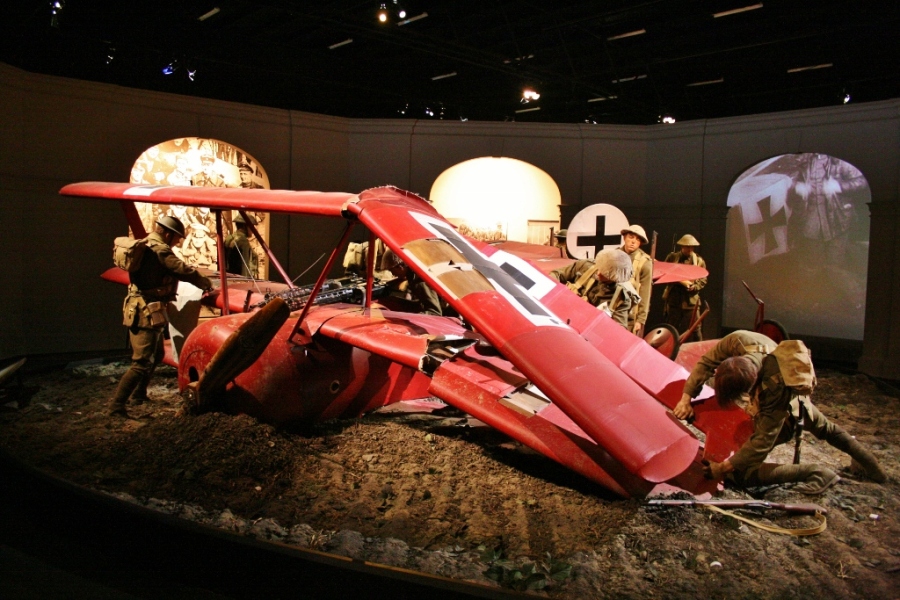
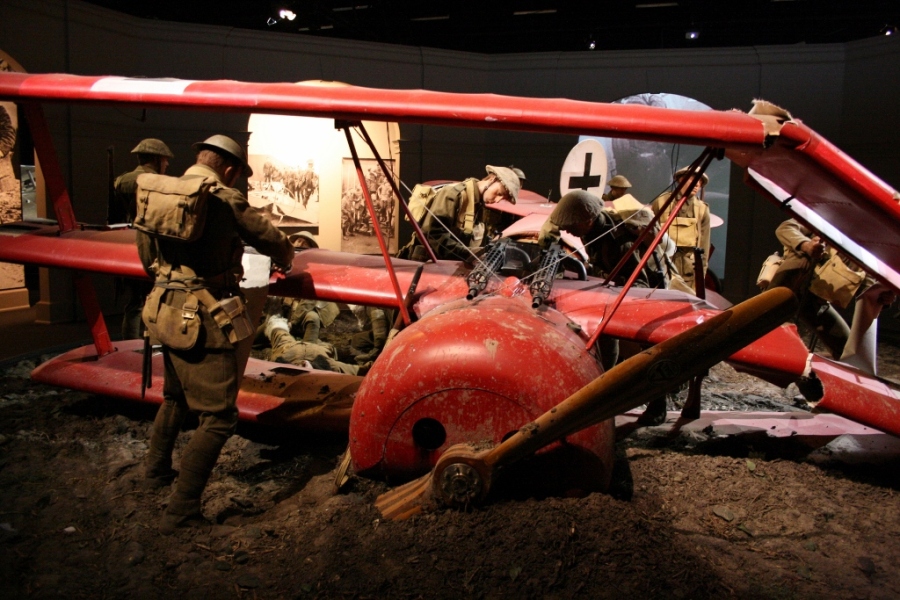


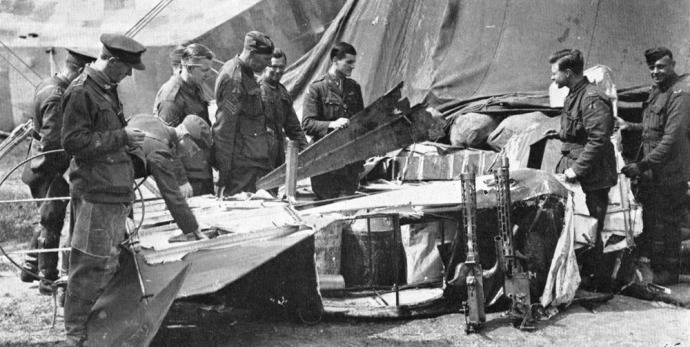
Manfred von Richthofen was buried in France on April 22nd, 1918 with full military honours. Officers of AFC No. 3 Squadron were pallbearers (including the afore-mentioned John Duigan) at his funeral and other members formed an honour guard for the “Red Baron“. His family relocated his body to Germany in 1925.

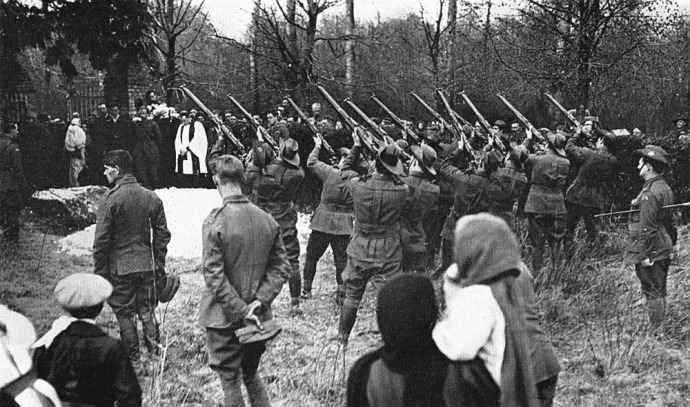
No. 3 Squadron was regarded as one of the best allied reconnaissance squadrons of the war and was involved in combat operations until November 10th, 1918. Following the armistice of November 11th, 1918 the squadron was used to run mail to Australian forces before disbanding on June 16th, 1919 upon arrival of all squadron members back home in Australia. The squadron operated again between 1925 to 1946, 1948 to 1953 and since 1956 remains an integral operational squadron of the RAAF.
No. 4 Squadron
No. 4 Squadron established at Point Cook, Victoria in October 1916 was the last AFC squadron formed for World War One. The squadron arrived in England on March 27th, 1917 where training commenced almost immediately. They were equipped with the Sopwith Camel scout fighter and were deployed to France on December 18th, 1917 to support the British 1st Army.


No. 4 squadron conducted patrols and ground attack missions and escorted reconnaissance aircraft. Their first air combat occurred on January 13th, 1918 and on March 21st, 1918 in a mission led by Captain Arthur Henry Cobby they would tangle with Manfred von Richthofen’s “Flying Circus” resulting in 5 German aircraft being shot down.
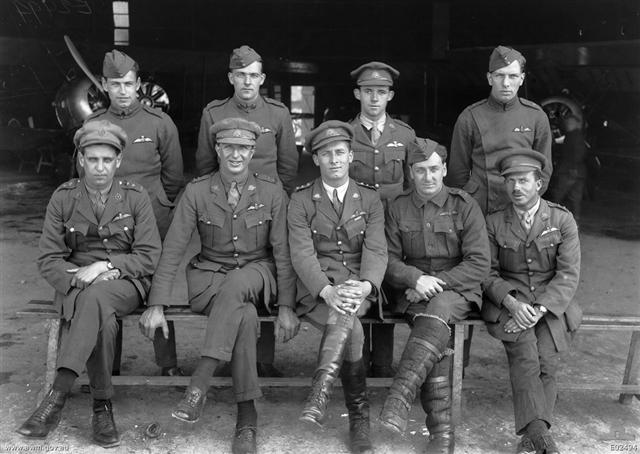

No. 4 squadron saw heavy action during the German spring offensive of 1918 and then in the allied offensive of August 1918. In October 1918 the squadron re-equipped with advanced Sopwith Snipe fighters (one of only 2 squadrons in France equipped with this aircraft). By wars end the squadron had destroyed 128 enemy aircraft and had 11 aces within its ranks.
Following the November 11th Armistice of 1918 to end the war, this squadron was the only Australian unit to take part in the British Army of Occupation that entered Germany on December 7th, 1918. They then returned to England in March 1919 and were disbanded on June 16th, 1919 upon return to Australia. The squadron was reinstated from 1937 to 1948 and again from 2009 onwards.

AFC Training Squadrons
To cover the demands for personnel, in addition to pilot and mechanic training provided at the Central Flying School in Point Cook, from 1917 Four AFC training squadrons (No. 5, 6, 7 and 8) were also based in England for pilots, observers and mechanics. They predominately used the Avro 504K trainer aircraft and the Sopwith Pup for elementary training, followed by operational training in combat aircraft.

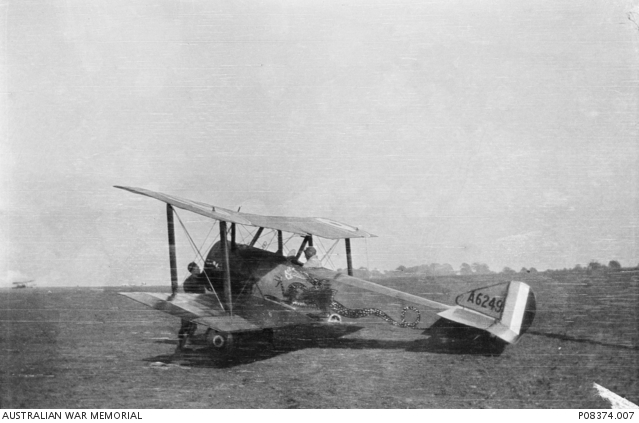
A six-week aeronautics course would be undertaken by flight crews, then their flight training involved 3 hours of dual control flight with an instructor followed by up to 20 hours of solo flight. Pilots were then required to prove their skills in air combat, bombing, photo reconnaissance, artillery spotting and the like before they were passed on to operational squadrons. Training of mechanics was very comprehensive and depending on their trade would last anywhere from 8 to 12 weeks, right up to 32 weeks for general engine fitters.
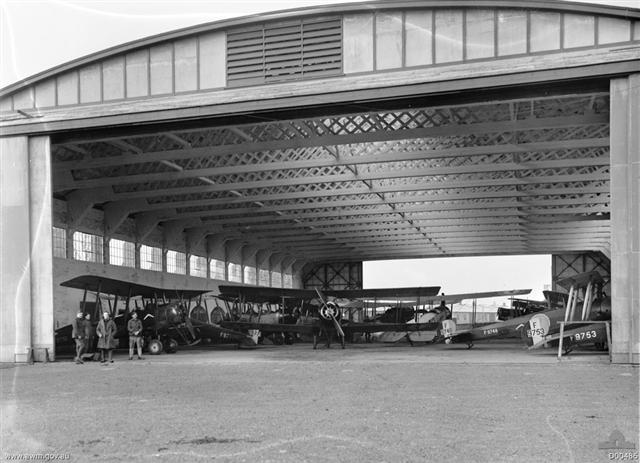
Many of the men who joined the AFC had seen prior service in the infantry and the Light Horse Brigade. According to the Australian War Memorial a total of 460 officers and 2,234 enlisted men served in the AFC during World War One and 178 of them unfortunately never returned home (more than a third died in training accidents). Lest We Forget.
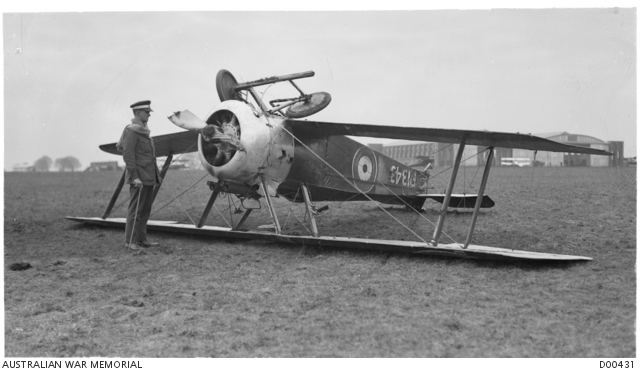
THE TOP AUSTRALIAN ACES

Harry Cobby
The top air ace of the AFC (5 or more air to air victories) and a national hero was Arthur Henry (Harry) Cobby (1894-1955) from Victoria who achieved 29 air to air victories (19 scout fighters, 5 two seaters and 5 observation balloons that were generally well defended – a speciality of his in particular, Harry Cobby helped develop tactics to take these balloons down). This was quite an achievement as he only saw active combat service for less than a year and achieved all these victories within six months between March 21st and September 4th, 1918!
Cobby enlisted in 1916 and embarked for Europe in 1917 where he served with No. 4 Squadron flying the Sopwith Camel. He seems to have been quite a character fitting his aircraft with aluminium cutouts of Charlie Chaplin!
Cobby soon encountered the enemy including expert pilots from Manfred Von Richthofens “Flying Circus“, 2 of which he claimed as his first victories on March 21st, 1918 (Albatros D.V scout planes). He shot down 2 or more aircraft in a day on at least 5 occasions. By 1918 he was promoted to Captain and was awarded the Distinguished Service Order (DSO), Distinguished Flying Cross (DFC) and bars for bravery. In September 1918 Cobby was reposted to England as a flight instructor, before returning to Australia in 1919.

Cobby was one of the original officers when the RAAF was formed in 1921 and eventually he reached the rank of Air Commodore in the RAAF where he continued to serve until 1946 and then in the Civil Aviation Department until his sudden death in 1955. During his career in World War Two he was the Air Commander of the Australian 1st Tactical Air Force, the main strike force of the RAAF fighting Imperial Japanese forces in the Pacific theatre. Unfortunately in April 1945 his career was affected by the “Morotai Mutiny” where senior RAAF flight officers resigned their posts in disgust at the RAAF being relegated to seemingly unimportant ground attack duties.
Cobby was relieved of his command for failing to maintain proper morale (hard to do when he could not give his men the missions they wanted to do) and in the subsequent enquiry was found by Judge Barry to have “failed to maintain proper control over his command“. Not a way for an Australian hero to end his career, but it was just the way things were in that period of the RAAF. He was officially discharged from the RAAF on August 19th, 1946.
Elwyn King

Elwyn Roy King (1894-1941) from New South Wales and also of No. 4 Squadron, was the second highest scoring ace of the AFC with 26 victories within six months flying Sopwith Camel and Snipe scout fighters (he scored 7 victories in the latter in 1918 to become the highest scoring ace in the type – his total tally was 11 scout fighters, 11 two seat aircraft and 4 balloons). He originally enlisted with the Australian Light Horse and was deployed to Egypt in 1916 but transferred to the AFC as an air mechanic in January 1917. Commencing flight training in August that year, he was subsequently commissioned as a pilot in October 1917 and allocated to No. 4 Squadron the following month.
King was deployed to France on March 21st, 1918 and scored his first aerial victory, a Pfalz D.III scout on May 20th, 1918 and his last on November 4th, 1918 was a highly prized Fokker D.VII scout. King bested a total nine D.VII in air combat – considered one of the best German scout fighters of the war, he shot down six of them in one week, flying a Sopwith Snipe late in the war, between October 28th and November 4th, 1918.
Returned home in 1919, Elwyn King spent the interwar years working in civil aviation and started a successful engineering business. With the outbreak of World War Two he signed up with the Royal Australian Air Force to become a training commander with the initial rank of Squadron Leader with No. 3 Elementary Flying School (3EFTS) in Essendon, Victoria (January 1940) and then No. 5 Elementary Flying School (5EFTS) in Narromine, NSW (December 1940).
Promoted to Wing Commander, King assumed command of No. 1 Service Flying Training School at Point Cook, Victoria in July 1941 and was promoted to acting Group Captain of the new Station Headquarters Point Cook in October 1941. Sadly and apparently unexpectedly, he passed away at just 47 years of age on November 28th, 1941 from a cerebral oedema (excess fluid on the brain).
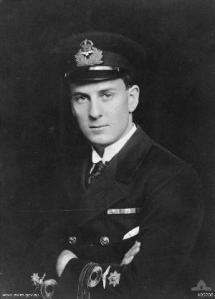
Harry Cobby and Elwyn King were not the top Australian air aces of World War One though. This distinction was held by a pair of pilots who flew with the Royal Naval Air Service (RNAS – which in 1918, along with the Royal Flying Corps became part of the Royal Air Force) in the European theatre.
Robert A. Little
Robert Alexander Little a Victorian flying with the RNAS achieved 47 air to air victories between 1916 and 1918 (he was rested in 1917 before volunteering to return in 1918, achieving 9 more victories) and for his gallantry was awarded the DSO and DSC. 24 of his victories were achieved whilst flying the Sopwith Triplane (he was credited with two victories in a day on four occasions in this aircraft).
Little was was a skilled marksman who would approach the enemy at extremely close range before opening fire. Sadly he was killed in action in 1918 at just 22 years of age when he was badly wounded in flight whilst intercepting German bombers and died following the crash of his Sopwith Camel fighter. The leading RNAS ace, Squadron Leader Raymond Collishaw (a Canadian who achieved 60 air to air victories, half of which were in a Sopwith Triplane) described Little as follows:
“an outstanding character, bold, aggressive and courageous, yet he was gentle and kindly. A resolute and brave man.”
Robert A. Little remains Australia’s greatest air ace and was equal 15th on overall victories of the air aces from all nations involved in World War One. The top 2 were German pilot Manfred Von Richthofen “The Red Baron” with 80 victories and French pilot Rene Fonck with 75 victories.
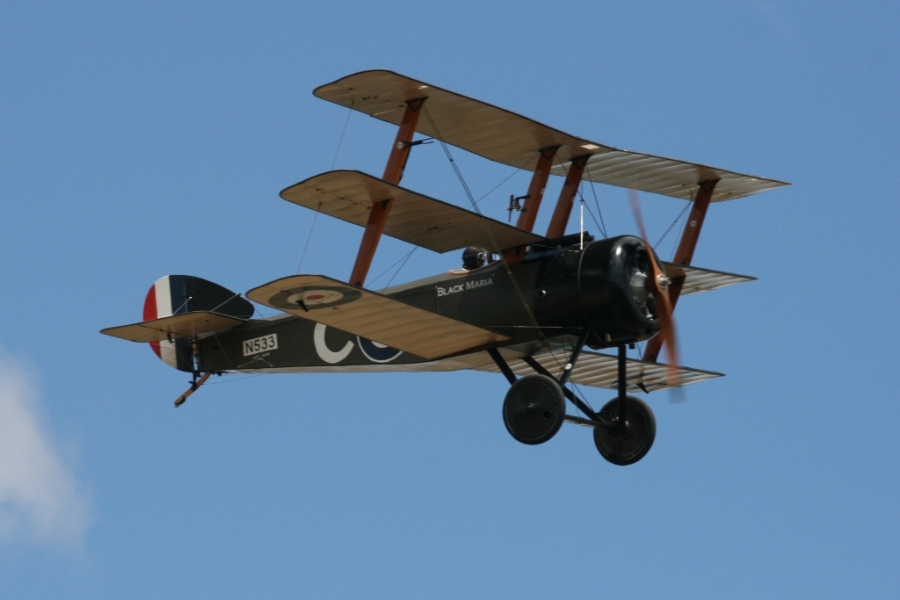
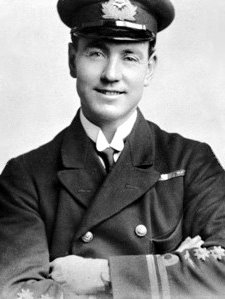
Roderic Dallas
Little was closely followed by Roderic Dallas, a Queenslander who also flew with the Royal Naval Air Service in Europe and achieved an official tally of 32 air to air victories during 1915-1918 (records are not 100% though and he may well have achieved a tally of up to 45). He also had great success flying the Sopwith Triplane in which he achieved more than half his victories.
During his career he was in command of RNAS Squadron No.1 and later RAF Squadron No. 40 and received the DSO and DSC for his bravery. He also sadly died at a young age in 1918 (just 26) on a solo flight in combat with 3 German Fokker Triplane aircraft, in which one of them shot down his Royal Aircraft Factory SE.5a. These pilots combatting each other in close aerial duels, truly were the knights of the sky!
THE INTER-WAR YEARS
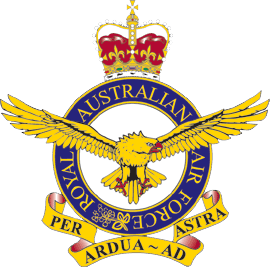 Many of the men who flew for the AFC in World War One helped form the post war air arm of Australia which in January 1920 became the interim Australian Air Corps (assets were formerly transferred from the Army to the AAC in a Government Gazette announcement on December 31st, 1919). The title of the Australian Air Force was established on March 31st, 1921 and then following the official consent from King George V became the Royal Australian Air Force on August 13th, 1921.
Many of the men who flew for the AFC in World War One helped form the post war air arm of Australia which in January 1920 became the interim Australian Air Corps (assets were formerly transferred from the Army to the AAC in a Government Gazette announcement on December 31st, 1919). The title of the Australian Air Force was established on March 31st, 1921 and then following the official consent from King George V became the Royal Australian Air Force on August 13th, 1921.
The South African Air Force (SAAF) has some claims to being the second oldest independent air arm, being formed on February 1st, 1920, but the AAC pipped them to the post a month earlier and was soon enough renamed to the RAAF, hence the title goes to Australia. Sorry South Africa!
Following World War One and a time of peace, the RAAF was significantly downsized and pretty much maintained as a basic defensive force (primarily the Central Flying School) and was also used extensively for civil duties. The latter role included aerial photography (for science and industry), aerial surveying for mapping purposes, bushfire patrols, meteorological flights, spraying for insect pests and air/sea rescue operations.
Imperial Gift
In 1920 the British government presented an imperial gift of 128 ex-wartime aircraft to Australia in return for services offered in World War One (35 Avro 504K trainers, 35 Royal Aircraft Factory S.E.5a fighters, 28 Airco/de Haviland DH-9 bombers and 30 Airco/de Haviland DH-9a bombers). These aircraft helped form the basis of the RAAF and by 1921 there were 153 aircraft on the roster. There were actually more aircraft than personnel at that time (21 officers and 128 other ranks), although most aircraft were kept in storage for a number of years and only about 50-60 aircraft were in use in those early years. Public and government interest in aviation had not waned, it was just that with the sheer cost of World War One and no foreseeable major enemy, there was no reason to financially maintain a large air arm at that point in time.
A basic mixed unit was operated by the RAAF until 1924 at No. 1 Flying Training School at Point Cook (including seaplanes). In 1925 No. 1 Squadron (based in Laverton, Victoria) and No. 3 Squadron (Richmond, NSW) were reinstated as fighter/bomber units, then in 1926 101 Fleet Co-operation Flight was also formed (Richmond, NSW). With the retirement of war surplus aircraft in the late 1920’s No. 1 Squadron became a bomber unit and No. 3 Squadron assumed an army cooperation role. The training school retained a “fighter squadron” and “seaplane squadron” which were basically just flights within the squadron. These 4 squadrons pretty much remained the basis of the RAAF until the mid 1930’s.

In 1922 the first ever locally manufactured aircraft in Australia rolled off the production line in Mascot, NSW. The 6 Avro 504K trainers were built for the RAAF. They joined 28 others already in service. All Avro 504K’s were retired in 1928 (all were sadly then destroyed except for the one on display at the Australian War Memorial).

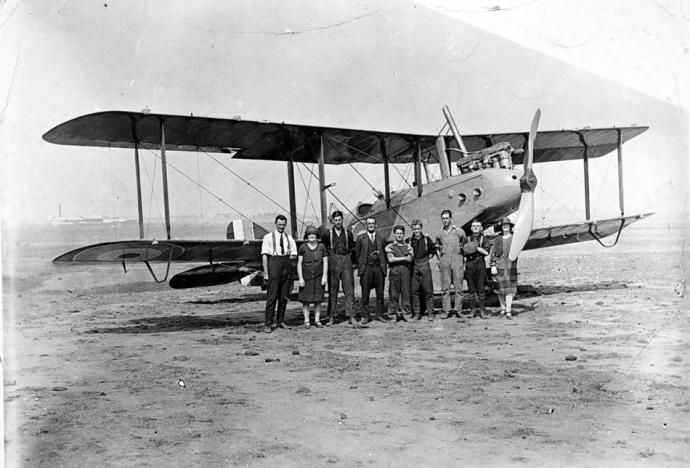
England to Australia Air Races
Big events like the first flight by Australian pilots from England to Australia in 1919 and the England to Australia air race in 1934 drew great public attention. The 28 day journey in 1919 was flown by AFC and RFC veterans and brothers Ross and Keith Smith in a converted Vickers Vimy bomber. They won the £10,000 prize offered by the Australian Government to complete it in less than 30 days.


The 1934 England to Australia MacRobertson Centenary Air Race was held to celebrate the 100th anniversary of the city of Melbourne in Victoria. The race was divided into two divisions (speed and handicap which had no restriction on the size or type of aircraft used) and the prize for the race was £15, 000 (about $75,000). The prize and fame attracted 64 entrants from 13 countries (many of them were famed pilots being World War One veterans and record holders) but on the day of the race start on October 20th, 1934 only 20 aircraft from 7 countries took off from Mildenhall near London (60,000 people were there to see them go). 18,000 kilometres, 19 countries and 7 seas later only 11 entrants completed the race (there were 5 compulsory stops along the route – Baghdad, Allahabad, Singapore, Darwin and Charleville; but a further 22 stops were available with fuel and necessary supplies along the route).
For those interested the speed event was won by a British team (C.W.A. Scott and T. Campbell Black) in “Grosvenor House” a red-painted de Havilland 88 Comet. They made the trip in just under 3 days with a total of 71 flying hours! The handicap division was won by the Dutch KLM airlines team flying a Douglas DC-2 airliner. They also ended up being the second fastest team, completing the race with just over 81 hours flying time.
The only Australian pilot to complete the race was C.J. (Jimmy) Melrose who came second in the handicap division flying a de Havilland DH 80A Puss Moth with a flying time of 120 hours (he barely made it to Australia, landing in Darwin with an empty tank!). Famed Australian aviator Charles Edward Kingsford Smith “Smithy” (a World War One veteran and barnstormer who made the first non-stop flight across the Pacific ocean from the USA to Australia in 1928) was meant to race, but had to change his aircraft and was unable to enter his Lockheed Altair “Lady Southern Cross” before the race started.
The RAAF Grows
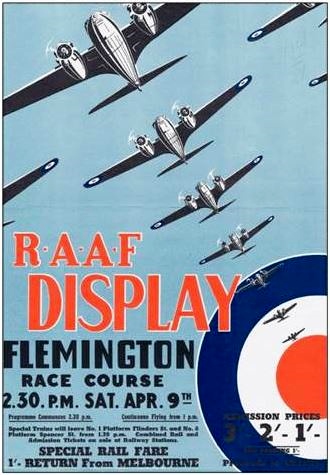
The public interest in aviation was also highlighted in the excitement over air shows such as the 1938 RAAF Display at Melbourne’s Flemington Race Course. 170,000 people turned up to see the flying that day! 85 aircraft including fighters, bombers, trainers and flying boats flew in the displays that ran for around 4 hours that day.
Mass formations and simulated air combat were highlights of the air display. Air Force officers on the day said around 7,000 men enquired about joining the RAAF at booths set up around the race course.
In 1934 the Australian government announced an expansion of its military forces. In 1935 the RAAF had less than 1,000 personnel. New air bases were built around the country (in Western Australia, Queensland, Northern Territory and Australian Capital Territory) and the RAAF was expanded. By 1939 the RAAF comprised 12 squadrons (of a projected 18), around 250 aircraft, 310 officers and 3179 servicemen. Unfortunately the aircraft on hand were mostly obsolete types.
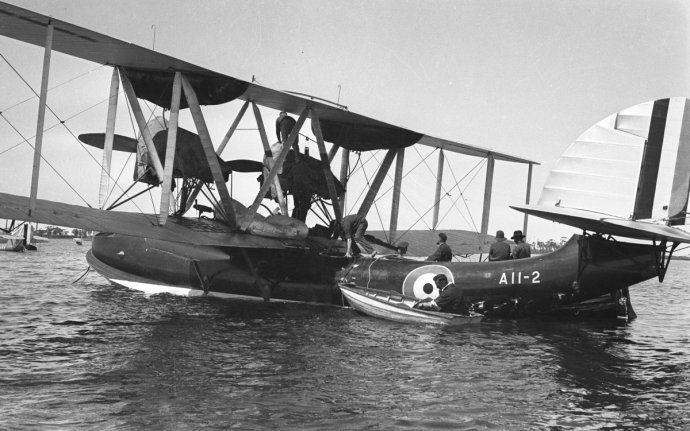
Into the 1920’s and early to mid 1930’s the frontline aircraft of the RAAF were made up of various biplanes such as the World War One era Royal Aircraft Factory SE.5a scout/fighter (operated 1920-1928), the Bristol Bulldog (operated 1930-1940), Westland Wapiti light bomber (operated 1929-1944 but from 1935 was primarily used for training) and Hawker Demon two seat fighter bombers (operated 1934-1945 and replaced the Wapiti). These aircraft were obsolete when the threat of another global war became a reality in 1939. Unfortunately attempts to establish a large local aircraft manufacturing industry had begun too late in Australia to cover the shortfall of aircraft that would normally have come from Great Britain which was then in an urgent stage of rearmament to combat the Germans in Europe.
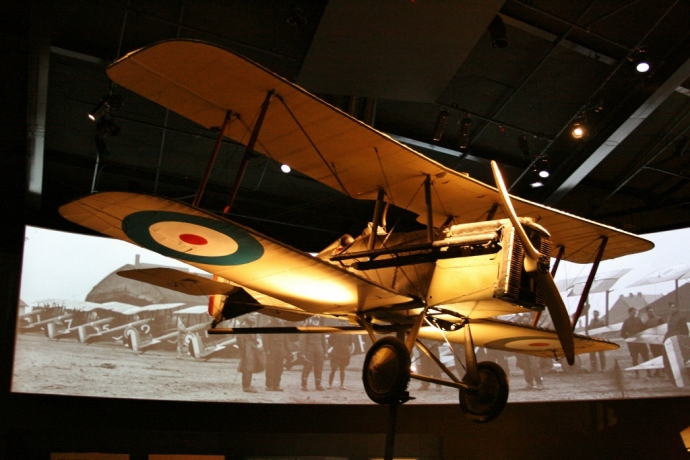
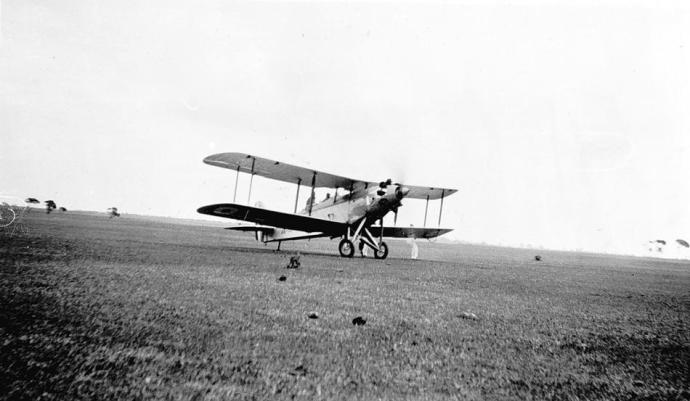

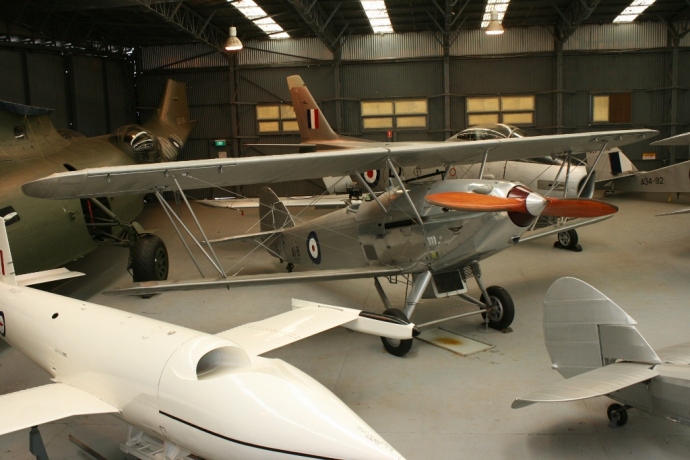
My next article will cover the operations of the RAAF in World War Two. A period when Australia faced a dire situation with its back to the wall and the imminent threat of Japanese invasion in 1942. Japan was on the attack with Australia in it’s sights. Bombs fell all over northern Australia and Japanese submarines prowled and attacked our shores. Against all odds RAAF airmen fought back and made sure the skies over Australia and the West Pacific were secure.
Resources:
Australian Dictionary of Biography
Australian Government – National Heritage Places – Point Cook Air Base
Fire in the Sky – The Australian Flying Corps in the First World War, Michael Molkentin, 2010
Monash University – Australian Aviation Pioneers
The Aerodrome – Roderic Dallas
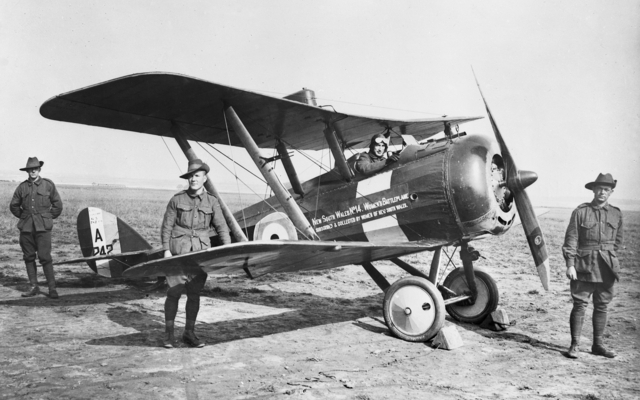

Reblogged this on Deano Around The World and commented:
For the history and aviation buffs out there (and those who may want to learn a little bit more about Australia’s involvement in WW1) – Part 1 of a 4 part series to celebrate the centenary of military aviation in Australia.
LikeLike
Excellent idea for a series and also so timely Deano, well done! Ron Gretton and Geoff Matthews have built as well as test flown a flying replica of the Bristol Boxkite (the RAAF’s first military aircraft purchase). It is called Project 2014 and can be found here http://www.boxkite2014.org/boxkite_home.html. Additionally, they collaborated with James Kightly on a book telling their tale will be released tomorrow — and its webpage is http://www.boxkite2014.org/book/book.htm. Once its flown at the Centenary it will be donated to the RAAF Museum in Point Cook.
LikeLike
Thanks I saw you posted that on your blog but haven’t had a chance to read it yet. Yes my timing was to coincide with the first military flight at Point Cook the birthplace of the RAAF 🙂
LikeLike
Hi Deano…yes, I put some of the info in my post into the comment. I thought steering to my post would have been just not cool to do 😉 Gretton and Matthews know well what they are doing and Kightly is an excellent as well as established author. The book is winging its way to me here in Florida so soon I’ll publish a post of the book’s review. Stories of replica making as well as restoration work is fascinating to me — mostly since I am unskilled for that work and a bit lazy to be honest to do the work 😉
LikeLike
That would have been fine if you wanted to post the link to your blog. My friend is at the air show today, photos from him so far are looking great
LikeLike
Yes rebuilding, restoring, replicas they are all a great deal of work. Amazing end results
LikeLike
I wish I was there. First RAAF Air Pageant I have missed in a while
LikeLike
I feel your pain…if there was only budget to attend the great events!
LikeLike
Alas yes. My home state, but not able to get back there right now. Sigh…
LikeLike
I am not a good self-promoter 😉 Post those photos! Thanks to for the photo credits — they have given me many leads!
LikeLike
Please check out the video I posted in the replies below of a video of the Boxkite in flight
LikeLike
Such a brave group of men. I did not know about the AF in WWI, (now I do), but I have been doing quite a bit of research into them as I prepare to go back into WWII.
LikeLike
Seat of the pants flying. Knights of the sky on a very dangerous steed indeed!
LikeLike
Replica Boxkite takes flight at the 2014 RAAF Centenary Air Show
LikeLike
RAAF Photos from the 2014 Centenary of Flight Air Show at Point Cook
http://images.airforce.gov.au/fotoweb/Grid.fwx?archiveId=5000&search=(IPTC105%20contains(Centenary%20of%20Military%20Aviation))
LikeLike
Replicas of the 3 types of aircraft that kicked it all off at Point Cook are now on display at the RAAF museum there
LikeLike
[…] in Australia. To commemorate this I am writing a four part series on the key stages of the RAAF: The Early Years – 1914 to 1939 (World War One and the interwar years), 1939 to 1945 (World War Two), 1945 to […]
LikeLike
[…] To commemorate this I am writing a four-part series of articles on the key stages of the RAAF: The Early Years – 1914 to 1939 (World War One and the interwar years), World War Two – 1939 to 1945, The Cold […]
LikeLike
Warfare is a fascinating subject. Despite the dubious morality of using violence to achieve personal or political aims. It remains that conflict has been used to do just that throughout recorded history.
Your article is very well done, a good read.
LikeLiked by 1 person
Thankyou. Yes there cannot be many stages in history where there wasn’t some conflict flaring up.
LikeLike
[…] writing a six-part series of articles on the key stages of the Royal Australian Air Force (RAAF): The Early Years – 1914 to 1939 (World War One and the interwar years), World War Two – 1939 to 1945, […]
LikeLike
[…] writing a six-part series of articles on the key stages of the Royal Australian Air Force (RAAF): The Early Years – 1914 to 1939 (World War One and the interwar years), World War Two – 1939 to 1945, […]
LikeLike
[…] writing a six-part series of articles on the key stages of the Royal Australian Air Force (RAAF): The Early Years – 1914 to 1939 (World War One and the interwar years), World War Two – 1939 to 1945, […]
LikeLike
[…] Four complete combat AFC squadrons took part in the war, flying observation, reconnaissance, photo reconnaissance, bombing, ground attack and scouting patrols to engage enemy aircraft over the battlefields of Europe and the Middle East – No. 1 Squadron departed Australia for the Middle East in March 1916. By late 1917 No. 2, 3, and 4 Squadrons were formed to fight in France. The AFC also operated an Australian Training Wing in England consisting of four training squadrons to train pilots to fly on the Western Front (No. 5, 6, 7 and 8 Squadrons). You can read more on the AFC here. […]
LikeLike
I have spent many long cold nights a top of the repeater station tower Springbrook
Air services Australia on behalf of the Australian Air Force have done a marvelous job protecting our air space from both terrestrial and non-terrestrial threats.
Owner operator
unknowncontroller
LikeLiked by 1 person